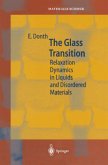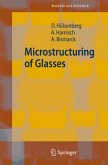This self-contained text introduces the physics of structurally disordered condensed systems at the level of advanced undergraduate and graduate students. Among the topics, the geometry and symmetries of highly regular structures, the various kinds of disorder, the phenomenology and the main theories of the glass transition, the experimental investigation on the structure and microscopic dynamics of amorphous systems and the pertinent modelling, the structure and stability of noble gas, metal and carbon clusters, and their evolution with cluster size, nanostructured solids, the structure of quasicrystals and their relation to nanocrystalline and amorphous solids.
From the reviews of the first edition: "The text is clearly presented, amply illustrated and has approximately 45 references with an equivalent amount of further reading [...] it provides a fresh viewpoint which makes it well worth careful reading... [and] provides a stimulating and novel coverage of a difficult subject area." Glass Technology
The teaching of solid state physics essentially concerns focusing on crystals and their properties. We study crystals and their properties because of the simple and elegant results obtained from the analysis of a spatially periodic system; this is why the analysis can be made considering a small set of atoms that represent the whole system of many particles. In contrast to the formal neat approach to crystals, the study of str- turally disordered condensed systems is somewhat complicated and often leads to relatively imprecise results, not to mention the experimental and computational e?ort involved. As such, almost all university textbooks, - cluding the advanced course books, only brie?y touch on the physics of am- phous systems. In any case, both the fundamental aspect and the ever wider industrial applications have given structurally disordered matter a role that should not be overlooked. The study of amorphous solids and their structure, stability and properties is a vibrantresearch branch; it is di?cult to imagine how any physicist, chemist or engineer who has to deal with materials could possibly ignore this class of systems. The author of Disordered Matter - an Introduction uses this course book atthePolitecnicoinMilan,Italy.Collectingthematerialforthecourseproved no mean task, leading him to have to prepare ad hoc didactic material. The continualexchangebetweenteacherandstudenthasledtothepresentversion of the book.
From the reviews of the first edition: "The text is clearly presented, amply illustrated and has approximately 45 references with an equivalent amount of further reading [...] it provides a fresh viewpoint which makes it well worth careful reading... [and] provides a stimulating and novel coverage of a difficult subject area." Glass Technology
The teaching of solid state physics essentially concerns focusing on crystals and their properties. We study crystals and their properties because of the simple and elegant results obtained from the analysis of a spatially periodic system; this is why the analysis can be made considering a small set of atoms that represent the whole system of many particles. In contrast to the formal neat approach to crystals, the study of str- turally disordered condensed systems is somewhat complicated and often leads to relatively imprecise results, not to mention the experimental and computational e?ort involved. As such, almost all university textbooks, - cluding the advanced course books, only brie?y touch on the physics of am- phous systems. In any case, both the fundamental aspect and the ever wider industrial applications have given structurally disordered matter a role that should not be overlooked. The study of amorphous solids and their structure, stability and properties is a vibrantresearch branch; it is di?cult to imagine how any physicist, chemist or engineer who has to deal with materials could possibly ignore this class of systems. The author of Disordered Matter - an Introduction uses this course book atthePolitecnicoinMilan,Italy.Collectingthematerialforthecourseproved no mean task, leading him to have to prepare ad hoc didactic material. The continualexchangebetweenteacherandstudenthasledtothepresentversion of the book.
From the reviews of the second edition: The text is clearly presented, amply illustrated and has approximately 45 references with an equivalent amount of further reading...it provides a fresh viewpoint which makes it well worth careful reading....it provides a stimulating and novel coverage of a difficult subject area. --Glass Technology "The book is an overview of various models of disordered condensed materials. ... the book covers successively glass transition, structure of disordered systems, atomic clusters and quasicrystals. The book (intended to readers with a good physics background) is easy to read, it is self-contained, and displays many theoretical and experimental illustrative results." (Guy Jumarie, Zentralblatt MATH, Vol. 1145, 2008)








